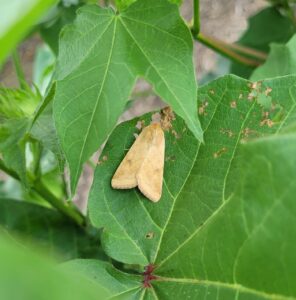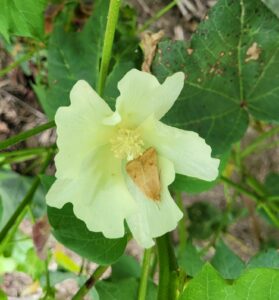Insect infestations have been generally mild in soybeans thus far, but I am starting to get more calls about stink bugs and a few other pests. As other crops mature, including early maturing soybean fields, late season insect populations often concentrate in the green islands of soybeans in the field. This may include corn earworm infestations in our latest maturing fields.
Stink Bugs are the topic of most calls at this time. Here are a few points to consider.
- Populations often start building rapidly at about R5. It really doesn’t matter if you already sprayed a few weeks ago when applying a fungicide. Infestations often continue to build up to and past R7.
- Treatment for stink bugs is recommended when you average 9 or more insects per 25 sweeps until R6 (full seed in the top of the plant). The only caveat to this is the redbanded stink bug which has a threshold of 4/25 sweeps. I highly doubt we will experience redbanded stink bug infestations this year or if we do, it will be in the southern most counties in very late beans.
- You should double this threshold (18/25 sweeps) in next 7-10 days after fields reach R6.
- Green stink bugs have composed the majority of stink bugs we’ve found thus far. Pyrethroid insecticides such as Brigade and other bifenthrin products, Karate/Warrior, Mustang Max provide good control of green stink bugs. I would be more inclined to use Orthene/Acephate if brown stink bugs are usually common.
I’ve also received a few calls about worms in beans. So far, soybean loopers haven’t shown up on a large scale and most fields have a mix of loopers, cloverworms and other assorted worms. With worms in beans, coverage is typically more important than insecticide rate. Corn earworms respond to lower rates of diamides (Vantacor, Elevest, Besiege) in soybeans than in cotton. Similarly, Intrepid Edge is effective for corn earworms in beans but not particularly effective in cotton. Green cloverworms and velvetbean caterpillars are susceptible to pyrethroids and will often be removed by applications for stink bugs or other insects. Soybean loopers may require higher rates of diamides due to resistance issues. Soybean looper populations migrate from South/Central America every year and resistance levels are hard to predict, control level/duration often decreases with lower rates of diamides.
Like our stink bug threshold, the defoliation threshold in soybean should be relaxed from 20% to 30-35% once fields reach R6. Making an insecticide application for defoliating pests once you are 7-10 days past R6 is not recommended. Don’t spray for defoliators if fields are beginning to turn color and naturally defoliate.


